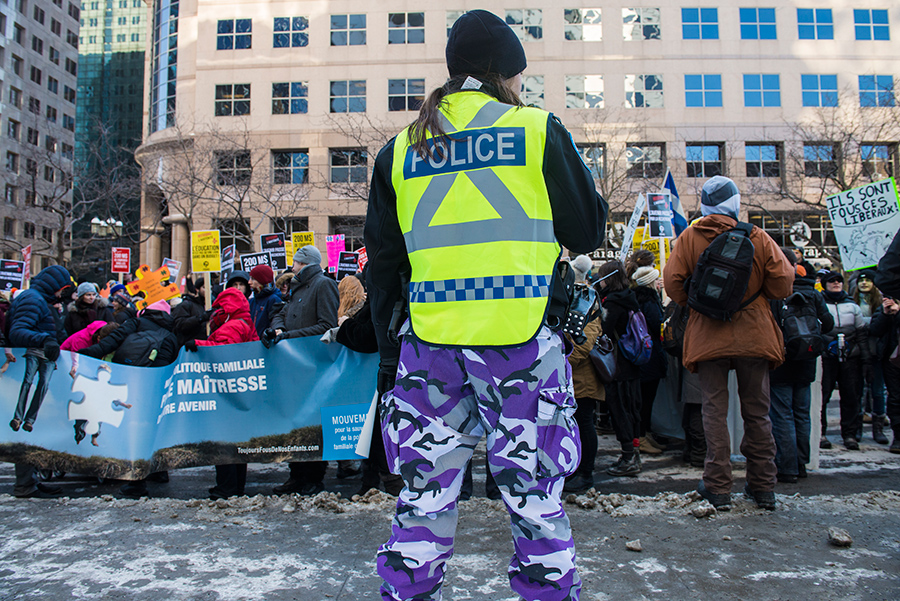Frigid weather remains, yet protests heat up
On Saturday, Feb. 28, what could be considered the closing protest of the eventful anti-austerity week started on a sunny afternoon at Place Émilie-Gamelin, practically hallowed ground for the city’s protest movements.
Video and photos by Andrej Ivanov, The Concordian.
Labelled as an action in defence of education and organized by the Fédération étudiante universitaire du Québec (FEUQ), the event went on peacefully while contingent of policemen escorted the protesters. Hundreds of people reportedly gathered to show solidarity.
“We marched and we will keep marching for education,” summed up Louise Chabot, president of the Centrale des syndicats du Québec (CSQ), when she addressed the crowd.
The protest was one of the biggest so far in response to austerity measures put in place by the Liberal government, ostensibly to balance the budget. These include an announcement of $200 million in cuts to Quebec’s universities, but Saturday’s event was an umbrella cause drawing widely from different groups such as the Association québecoise des centres de la petite enfance (AQCPE).
The president of the AQCPE Louis Senécal stressed the importance of early education to explain why they participated in the protest. “Together, we are the future of democracy and your children will become [the future of democracy] in their own turn,” said Senécal. “So we fight for them, so that education that starts in the CPEs [can] be an equal chance for everyone.”

The protest coincided with the recent departure of former Education Minister Yves Bolduc and the instalment of his replacement, François Blais. Most speakers mentioned the hope that the new Education Minister would help change the course of austerity measures affecting education, by taking into serious consideration the demands of the various groups opposed to them.
Some speakers, such as Alexis Tremblay, president of the Fédération étudiante collégiale du Québec (FECQ), critiqued the Couillard government and its treatment of the education system heavily. “We need to take the time to refuse that this government crushes our future prospects,” said Tremblay.
The protest closed with a short speech by Jonathan Bouchard, president of the FEUQ, who also insisted on what it means for a society to maintain and defend a decent education system. “The future generation is us, and what we ask for is an education system that is strong… [and] a more just and equitable society.”
Small groups in the audience booed both Tremblay and Bouchard while they spoke to the people gathered in front of the premier’s office on McGill College Ave. at the end of the protest, perhaps hinting at the coming divides in the protest movement that could be seen during the 2012 Maple Spring. Some in the crowd saw the FEUQ and FECQ as “soft” protest groups, whereas other organizations such as the 2012 Coalition large de l’Association pour une solidarité syndicale étudiante (CLASSE), once represented by Gabriel Nadeau-Dubois, were perceived by some as more radical and resolute groups. As a further example, Saturday’s protest furnished its itinerary to police in advance, an initiative seen by many in as already weak or contradictory to the essence of resistance.
Nonetheless, there was a familiar feeling to the closing event of the anti-austerity week. As Maxime Gagnon, a UQAM student, said, “it may still be winter and cold as hell, but with the protests coming back, it feels more and more like spring is coming.”












